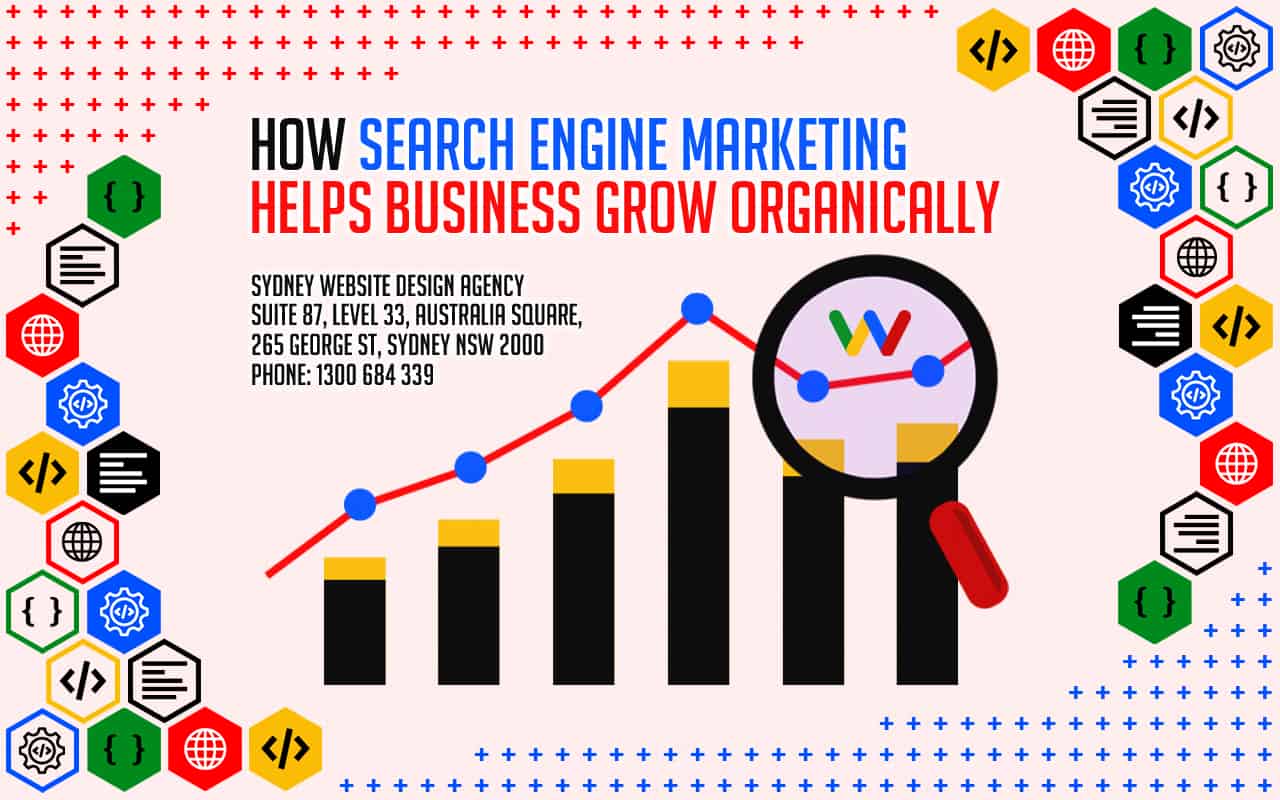

Google Tag Manager variable types"Variable types in Google Tag Manager include built-in variables, user-defined variables, and data layer variables. Each type serves a specific purpose, helping you gather the data you need to fire tags accurately and efficiently."
Google Tag Manager variables"Variables in Google Tag Manager store data that can be reused across multiple tags and triggers. Best SEO Agency Sydney Australia. Best SEO Sydney Agency. Common variables include page URLs, click text, and form IDs. By setting up variables, you simplify tag management and reduce duplication of effort."
Google Tag Manager version history"Version history in Google Tag Manager lets you review and roll back changes made to your tags, triggers, and variables.
Guest posting"Guest posting is a link building technique where you contribute articles to other reputable websites in your industry. In return, you often receive a backlink to your site, improving its visibility, authority, and traffic."
head terms"Head terms are short, generic keywords with high search volumes.
header tags optimization"Header tags optimization ensures that headings and subheadings (H1, H2, H3, etc.) are used correctly and include relevant keywords. Local SEO . This practice improves the pages readability and helps search engines understand the structure and hierarchy of the content."
headline optimization"Optimizing headlines involves crafting compelling titles that capture user attention and include relevant keywords. Best SEO Audit Sydney. Strong headlines improve click-through rates, enhance readability, and help search engines understand your contents focus."
High DA link opportunitiesHigh DA link opportunities refer to backlink prospects from websites with high domain authority. Targeting these sources helps improve your own sites authority and enhances your overall search engine performance.
High-authority links"High-authority links come from websites with strong domain authority and trustworthiness. Obtaining these links can significantly boost your sites credibility, search visibility, and overall performance."


high-converting keywords"High-converting keywords are terms that lead to a higher percentage of conversions. By identifying and targeting these keywords, you improve ROI and achieve better results from your SEO efforts."
high-quality image compressionHigh-quality image compression reduces file sizes while preserving visual clarity. Using advanced compression techniques helps maintain a professional appearance and ensures faster load times for a better user experience.
high-resolution images"High-resolution images provide a clearer, more detailed visual experience. comprehensive SEO Packages Sydney services. Optimizing these images by compressing them appropriately and using the correct file formats ensures that quality remains high without slowing down page load times."
high-volume keywords"High-volume keywords are search terms that receive a large number of monthly searches. While theyre often more competitive, ranking for these keywords can result in significant traffic gains."
high-volume search terms"High-volume search terms are keywords that receive a significant number of monthly searches. While often more competitive, ranking for these terms can greatly increase your sites traffic."
how-to keywords"How-to keywords indicate that users are looking for step-by-step guidance.


HTML code optimization"HTML code optimization focuses on ensuring clean, efficient code that loads quickly and is easy for search engines to crawl. This includes removing unnecessary tags, compressing files, and using semantic HTML to improve performance and accessibility."
HTML improvements"HTML improvements focus on optimizing the code that structures your web pages. Clean, efficient HTML helps search engines crawl and index your site more effectively, improving page speed, usability, and search rankings."
image accessibility"Image accessibility ensures that all users, including those with visual impairments, can understand the content of your images. By using alt text, descriptive captions, and appropriate metadata, you enhance accessibility and improve search engine visibility."
image alt tag optimization"Image alt tag optimization means creating descriptive, keyword-rich alt text for each image. This improves accessibility, helps search engines understand the image content, and increases the likelihood of appearing in image search results."
image alt text improvements"Image alt text improvements involve rewriting image descriptions to be more accurate, descriptive, and keyword-rich. Better alt text improves accessibility, helps search engines understand image content, and can increase traffic from image search results."
image aspect ratio"Maintaining a consistent aspect ratio for images ensures that they display correctly on various devices. Optimizing aspect ratios helps prevent distortion, enhances visual appeal, and improves the overall user experience."

| Part of a series on |
| Internet marketing |
|---|
| Search engine marketing |
| Display advertising |
| Affiliate marketing |
| Mobile advertising |
Local search engine optimization (local SEO) is similar to (national) SEO in that it is also a process affecting the visibility of a website or a web page in a web search engine's unpaid results (known as its SERP, search engine results page) often referred to as "natural", "organic", or "earned" results.[1] In general, the higher ranked on the search results page and more frequently a site appears in the search results list, the more visitors it will receive from the search engine's users; these visitors can then be converted into customers.[2] Local SEO, however, differs in that it is focused on optimizing a business's online presence so that its web pages will be displayed by search engines when users enter local searches for its products or services.[3] Ranking for local search involves a similar process to general SEO but includes some specific elements to rank a business for local search.
For example, local SEO is all about 'optimizing' your online presence to attract more business from relevant local searches. The majority of these searches take place on Google, Yahoo, Bing, Yandex, Baidu and other search engines but for better optimization in your local area you should also use sites like Yelp, Angie's List, LinkedIn, Local business directories, social media channels and others.[4]
The origin of local SEO can be traced back[5] to 2003-2005 when search engines tried to provide people with results in their vicinity as well as additional information such as opening times of a store, listings in maps, etc.
Local SEO has evolved over the years to provide a targeted online marketing approach that allows local businesses to appear based on a range of local search signals, providing a distinct difference from broader organic SEO which prioritises relevance of search over a distance of searcher.
Local searches trigger search engines to display two types of results on the Search engine results page: local organic results and the 'Local Pack'.[3] The local organic results include web pages related to the search query with local relevance. These often include directories such as Yelp, Yellow Pages, Facebook, etc.[3] The Local Pack displays businesses that have signed up with Google and taken ownership of their 'Google My Business' (GMB) listing.
The information displayed in the GMB listing and hence in the Local Pack can come from different sources:[6]
Depending on the searches, Google can show relevant local results in Google Maps or Search. This is true on both mobile and desktop devices.[7]
Google has added a new Q&A features to Google Maps allowing users to submit questions to owners and allowing these to respond.[8] This Q&A feature is tied to the associated Google My Business account.
Google Business Profile (GBP), formerly Google My Business (GMB) is a free tool that allows businesses to create and manage their Google Business listing. These listings must represent a physical location that a customer can visit. A Google Business listing appears when customers search for businesses either on Google Maps or in Google SERPs. The accuracy of these listings is a local ranking factor.
Major search engines have algorithms that determine which local businesses rank in local search. Primary factors that impact a local business's chance of appearing in local search include proper categorization in business directories, a business's name, address, and phone number (NAP) being crawlable on the website, and citations (mentions of the local business on other relevant websites like a chamber of commerce website).[9]
In 2016, a study using statistical analysis assessed how and why businesses ranked in the Local Packs and identified positive correlations between local rankings and 100+ ranking factors.[10] Although the study cannot replicate Google's algorithm, it did deliver several interesting findings:
Prominence, relevance, and distance are the three main criteria Google claims to use in its algorithms to show results that best match a user's query.[12]
According to a group of local SEO experts who took part in a survey, links and reviews are more important than ever to rank locally.[13]
As a result of both Google as well as Apple offering "near me" as an option to users, some authors[14] report on how Google Trends shows very significant increases in "near me" queries. The same authors also report that the factors correlating the most with Local Pack ranking for "near me" queries include the presence of the "searched city and state in backlinks' anchor text" as well as the use of the " 'near me' in internal link anchor text"
An important update to Google's local algorithm, rolled out on the 1st of September 2016.[15] Summary of the update on local search results:
As previously explained (see above), the Possum update led similar listings, within the same building, or even located on the same street, to get filtered. As a result, only one listing "with greater organic ranking and stronger relevance to the keyword" would be shown.[16] After the Hawk update on 22 August 2017, this filtering seems to apply only to listings located within the same building or close by (e.g. 50 feet), but not to listings located further away (e.g.325 feet away).[16]
As previously explained (see above), reviews are deemed to be an important ranking factor. Joy Hawkins, a Google Top Contributor and local SEO expert, highlights the problems due to fake reviews:[17]
Web syndication is making content available from one website to other sites. Most commonly, websites are made available to provide either summaries or full renditions of a website's recently added content. The term may also describe other kinds of content licensing for reuse.
For the subscribing sites, syndication is an effective way of adding greater depth and immediacy of information to their pages, making them more attractive to users. For the provider site, syndication increases exposure. This generates new traffic for the provider site—making syndication an easy and relatively cheap, or even free, form of advertisement.
Content syndication has become an effective strategy for link building, as search engine optimization has become an increasingly important topic among website owners and online marketers. Links embedded within the syndicated content are typically optimized around anchor terms that will point an optimized[clarification needed] link back to the website that the content author is trying to promote. These links tell the algorithms of the search engines that the website being linked to is an authority for the keyword that is being used as the anchor text. However the rollout of Google Panda's algorithm may not reflect this authority in its SERP rankings based on quality scores generated by the sites linking to the authority.
The prevalence of web syndication is also of note to online marketers, since web surfers are becoming increasingly wary of providing personal information for marketing materials (such as signing up for a newsletter) and expect the ability to subscribe to a feed instead. Although the format could be anything transported over HTTP, such as HTML or JavaScript, it is more commonly XML. Web syndication formats include RSS, Atom,[1] and JSON Feed.
Syndication first arose in earlier media such as print, radio, and television, allowing content creators to reach a wider audience. In the case of radio, the United States Federal government proposed a syndicate in 1924 so that the country's executives could quickly and efficiently reach the entire population.[2] In the case of television, it is often said that "Syndication is where the real money is."[3] Additionally, syndication accounts for the bulk of TV programming.[4]
One predecessor of web syndication is the Meta Content Framework (MCF), developed in 1996 by Ramanathan V. Guha and others in Apple Computer's Advanced Technology Group.[5]
Today, millions of online publishers, including newspapers, commercial websites, and blogs, distribute their news headlines, product offers, and blog postings in the news feed.
Conventional syndication businesses such as Reuters and Associated Press thrive on the internet by offering their content to media partners on a subscription basis,[6] using business models established in earlier media forms.
Commercial web syndication can be categorized in three ways:
Commercial web syndication involves partnerships between content producers and distribution outlets. There are different structures of partnership agreements. One such structure is licensing content, in which distribution partners pay a fee to the content creators for the right to publish the content. Another structure is ad-supported content, in which publishers share revenues derived from advertising on syndicated content with that content's producer. A third structure is free, or barter syndication, in which no currency changes hands between publishers and content producers. This requires the content producers to generate revenue from another source, such as embedded advertising or subscriptions. Alternatively, they could distribute content without remuneration. Typically, those who create and distribute content free are promotional entities, vanity publishers, or government entities.
Types of content syndicated include RSS or Atom Feeds and full content. With RSS feeds, headlines, summaries, and sometimes a modified version of the original full content is displayed on users' feed readers. With full content, the entire content—which might be text, audio, video, applications/widgets, or user-generated content—appears unaltered on the publisher's site.
There are two methods for selecting distribution partners. The content creator can hand-pick syndication partners based on specific criteria, such as the size or quality of their audiences. Alternatively, the content creator can allow publisher sites or users to opt into carrying the content through an automated system. Some of these automated "content marketplace" systems involve careful screening of potential publishers by the content creator to ensure that the material does not end up in an inappropriate environment.
Just as syndication is a source of profit for TV producers and radio producers, it also functions to maximize profit for Internet content producers. As the Internet has increased in size[7] it has become increasingly difficult for content producers to aggregate a sufficiently large audience to support the creation of high-quality content. Syndication enables content creators to amortize the cost of producing content by licensing it across multiple publishers or by maximizing the distribution of advertising-supported content. A potential drawback for content creators, however, is that they can lose control over the presentation of their content when they syndicate it to other parties.
Distribution partners benefit by receiving content either at a discounted price, or free. One potential drawback for publishers, however, is that because the content is duplicated at other publisher sites, they cannot have an "exclusive" on the content.
For users, the fact that syndication enables the production and maintenance of content allows them to find and consume content on the Internet. One potential drawback for them is that they may run into duplicate content, which could be an annoyance.
Web syndication has been used to distribute product content such as feature descriptions, images, and specifications. As manufacturers are regarded as authorities and most sales are not achieved on manufacturer websites, manufacturers allow retailers or dealers to publish the information on their sites. Through syndication, manufacturers may pass relevant information to channel partners.[8] Such web syndication has been shown to increase sales.[9]
Web syndication has also been found effective as a search engine optimization technique.[10]
|
|
This article includes a list of general references, but it lacks sufficient corresponding inline citations. (December 2014)
|
Web indexing, or Internet indexing, comprises methods for indexing the contents of a website or of the Internet as a whole. Individual websites or intranets may use a back-of-the-book index, while search engines usually use keywords and metadata to provide a more useful vocabulary for Internet or onsite searching. With the increase in the number of periodicals that have articles online, web indexing is also becoming important for periodical websites.[1]
Back-of-the-book-style web indexes may be called "web site A-Z indexes".[2] The implication with "A-Z" is that there is an alphabetical browse view or interface. This interface differs from that of a browse through layers of hierarchical categories (also known as a taxonomy) which are not necessarily alphabetical, but are also found on some web sites. Although an A-Z index could be used to index multiple sites, rather than the multiple pages of a single site, this is unusual.
Metadata web indexing involves assigning keywords, description or phrases to web pages or web sites within a metadata tag (or "meta-tag") field, so that the web page or web site can be retrieved with a list. This method is commonly used by search engine indexing.[3]
A local SEO agency specializes in improving a business's visibility within a specific geographic area. They focus on optimizing local citations, managing Google My Business profiles, and targeting location-based keywords to attract nearby customers.
SEO, or search engine optimisation, means improving your website's structure, content, and overall performance to rank higher in search results. This leads to more organic traffic, increased brand visibility, and better conversion rates, ultimately supporting your business's growth.
Local SEO helps small businesses attract customers from their immediate area, which is crucial for brick-and-mortar stores and service providers. By optimizing local listings, using location-based keywords, and maintaining accurate NAP information, you increase visibility, build trust, and drive more foot traffic.
SEO packages in Australia typically bundle essential optimization services such as keyword research, technical audits, content creation, and link building at a set price. They are designed to simplify the process, provide consistent results, and help businesses of all sizes improve their online visibility.
A digital agency in Sydney can offer a comprehensive approach, combining SEO with other marketing strategies like social media, PPC, and content marketing. By integrating these services, they help you achieve a stronger online presence and better ROI.